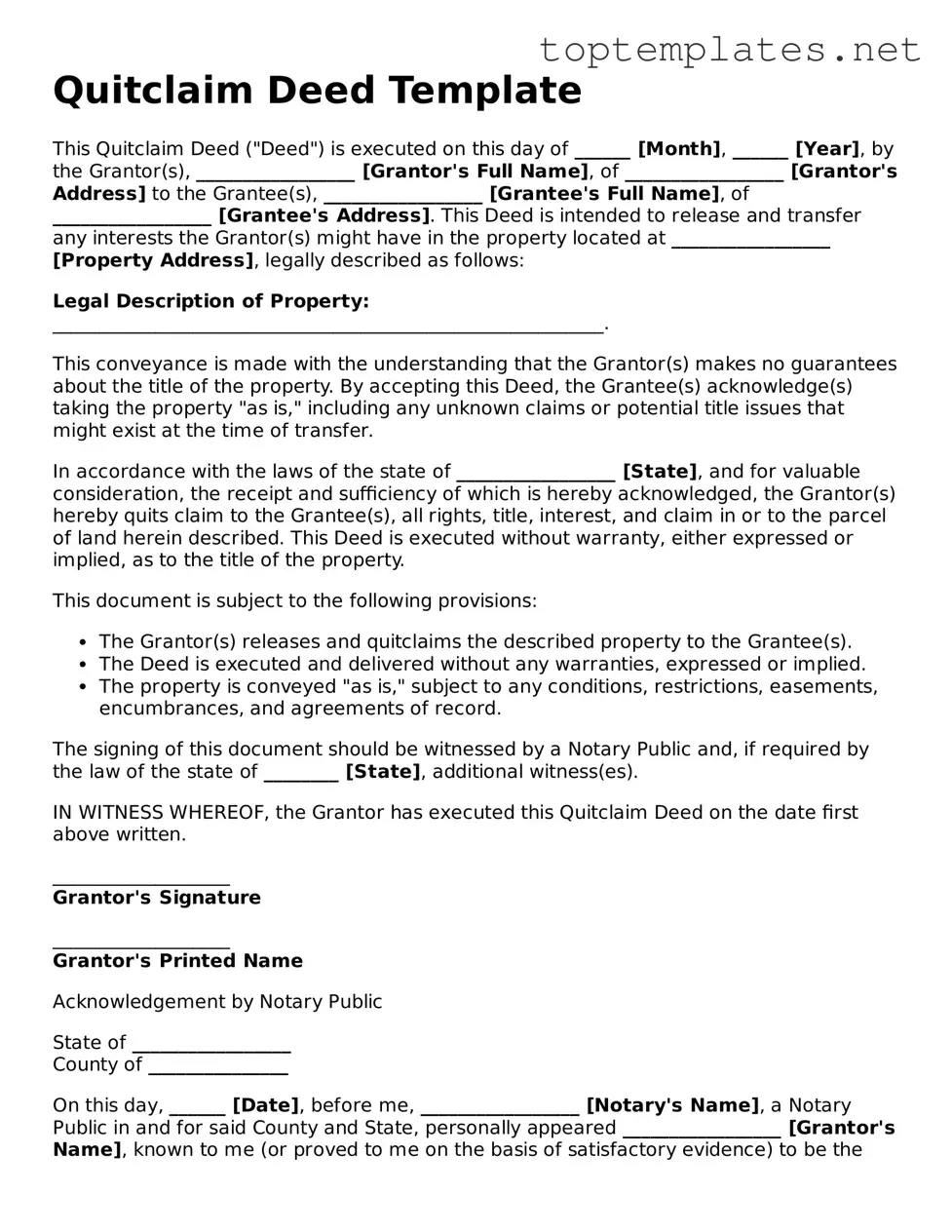Quitclaim Deed Template
This Quitclaim Deed ("Deed") is executed on this day of ______ [Month], ______ [Year], by the Grantor(s), _________________ [Grantor's Full Name], of _________________ [Grantor's Address] to the Grantee(s), _________________ [Grantee's Full Name], of _________________ [Grantee's Address]. This Deed is intended to release and transfer any interests the Grantor(s) might have in the property located at _________________ [Property Address], legally described as follows:
Legal Description of Property: ___________________________________________________________.
This conveyance is made with the understanding that the Grantor(s) makes no guarantees about the title of the property. By accepting this Deed, the Grantee(s) acknowledge(s) taking the property "as is," including any unknown claims or potential title issues that might exist at the time of transfer.
In accordance with the laws of the state of _________________ [State], and for valuable consideration, the receipt and sufficiency of which is hereby acknowledged, the Grantor(s) hereby quits claim to the Grantee(s), all rights, title, interest, and claim in or to the parcel of land herein described. This Deed is executed without warranty, either expressed or implied, as to the title of the property.
This document is subject to the following provisions:
- The Grantor(s) releases and quitclaims the described property to the Grantee(s).
- The Deed is executed and delivered without any warranties, expressed or implied.
- The property is conveyed "as is," subject to any conditions, restrictions, easements, encumbrances, and agreements of record.
The signing of this document should be witnessed by a Notary Public and, if required by the law of the state of ________ [State], additional witness(es).
IN WITNESS WHEREOF, the Grantor has executed this Quitclaim Deed on the date first above written.
___________________
Grantor's Signature
___________________
Grantor's Printed Name
Acknowledgement by Notary Public
State of _________________
County of _______________
On this day, ______ [Date], before me, _________________ [Notary's Name], a Notary Public in and for said County and State, personally appeared _________________ [Grantor's Name], known to me (or proved to me on the basis of satisfactory evidence) to be the person(s) whose name(s) is/are subscribed to the within instrument, and acknowledged that he/she/they executed the same for the purposes therein contained.
Witness my hand and official seal.
___________________
Notary's Signature
___________________
Notary's Printed Name
My Commission Expires: ______
